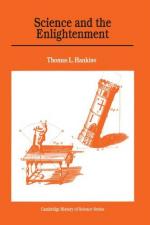
|
| Name: _________________________ | Period: ___________________ |
This quiz consists of 5 multiple choice and 5 short answer questions through Chapter 4, Chemistry.
Multiple Choice Questions
1. In the preface to his "Histoire" of the Paris Academy of Science, who argued in 1699 that the new "geometric spirit" could also improve works on politics, morals, literary criticism, and even public speaking?
(a) Fontenelle.
(b) Varignon.
(c) Newton.
(d) Leibniz.
2. The narrator reveals that mathematicians pursued ________, in which the physical object was reduced to a few idealized properties that were capable of quantification.
(a) Synthesis.
(b) Analysis.
(c) Rational mechanics.
(d) Psychology.
3. Who made the first extensive series of investigations of electricity in his book "De Magnete," according to Chapter 3?
(a) Robert Symmer.
(b) Abbe Nollet.
(c) William Gilbert.
(d) John Cuthbertson.
4. In 1729, ________, a dedicated amateur experimenter and occasional contributor to the "Philosophical Transactions" of the Royal Society, discovered that electricity could be communicated over rather long distances by contact.
(a) 'sGravesande.
(b) Francis Hauksbee.
(c) Stephen Gray.
(d) Newton.
5. In Chapter 4, the narrator reveals that Anne Robert Jacques Turgot was a famous French ________.
(a) Chemist.
(b) Public servant.
(c) Physicist.
(d) Philosopher.
Short Answer Questions
1. According to Chapter 1, ________, in 1747, attributed the cause of a "great revolution in physics" to Newton's "Principia."
2. In February 1744, ________, master apothecary to the French Army, published an article on the red precipitate of mercury "per se" in "Observations sur la physique, sur l'histoire naturelle, et sur les arts."
3. The narrator explains in Chapter 3 that ________ and ________ were the best examples of subtle fluids.
4. In Chapter 4, Abbe Condillac claimed that ________ was the best language because it had the best symbols.
5. In the hands of ________, history led not to an understanding of God's will but rather to an understanding of human nature.
|
This section contains 269 words (approx. 1 page at 300 words per page) |

|




